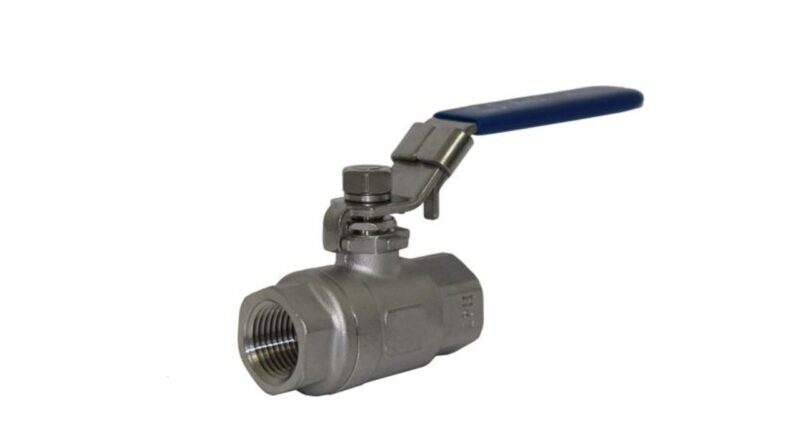How To Choose the Right 2-Piece Ball Valve
When it comes to ensuring efficient and reliable performance in the fluid control system, selecting the right 2-piece ball valve is essential.
These valves are versatile, robust, and widely used in various applications due to their design and functionality.
If you are looking to buy the right kind of these valves, here is the complete guide to help you make an informed decision.
Understanding the 2-Piece Ball Valve
They are also known as two-way ball valves and consist of two main parts: the valve body and a rotating ball with a bore in the center.
The ball rotates within the body to open or close the valve, allowing or stopping the flow of liquids and gases. The design ensures a straight-through flow path when open, minimizing pressure drop and maintaining high flow rates.
Key Features
- Threaded Connection: Typically features female threads x female threads, making installation quick and easy without the need for additional tools.
- Full Port Design: Also known as full bore, this design ensures that the inside diameter of the valve matches the pipe diameter, resulting in no flow restriction.
- High Pressure Rating: Often rated to withstand up to 1000 PSI, suitable for high-pressure applications.
- Seals: Equipped with PTFE/Teflon seals, known for their heat and chemical resistance.
- Handle Design: Lever type with a locking latch and blow-out-proof stem for secure operation.
- Size Range: Available in various sizes, from 1/4″ to 4″.
Factors to Consider When Choosing a 2-Piece Ball Valve
1. Material
The material of the valve body and internal components is crucial for ensuring compatibility with the fluid and operating conditions. Stainless steel is a popular choice due to its durability, corrosion resistance, and suitability for a wide range of applications, including harsh industrial environments.
2. Pressure and Temperature Ratings
Ensure the valve can handle the maximum pressure and temperature requirements of your system. Typically, these ball valves are rated up to 1000 PSI, making them suitable for high-pressure applications. Additionally, these valves can operate efficiently across a wide temperature range due to their PTFE/Teflon seals.
These seals provide excellent chemical and heat resistance, ensuring reliable performance and a secure seal under various operating conditions.
3. Port Size
Opt for a full port valve to maintain the same internal diameter as the pipe, minimizing pressure drop and maximizing flow rate. This feature is particularly important in applications where maintaining high flow efficiency is critical.
4. Connection Type
Threaded connections (female threads x female threads) are standard for 2-piece valves, offering easy and tool-free installation. Ensure the thread type and size match your piping system for a secure and leak-free connection.
5. Handle and Stem Design
A lever-type handle with a locking latch ensures secure operation and prevents accidental movement. Additionally, a blow-out-proof stem design enhances safety by preventing the stem from being ejected under pressure.
6. Seal Material
PTFE/Teflon seals are preferred for their excellent chemical and heat resistance, ensuring a reliable seal under various operating conditions. Check the compatibility of the seal material with the fluid in your system to avoid degradation and leaks.
7. Size Range
Choose a valve size that matches your piping system. The availability of sizes from 1/4″ to 4″ provides flexibility to accommodate different flow requirements and system configurations.
Conclusion
Choosing the right 2-piece ball valve is essential for ensuring efficient fluid control in your system. By considering key factors such as material, pressure and temperature ratings, port size, connection type, handle and stem design, seal material, and size range, you can select a valve that meets your specific needs. Stainless steel 2-piece ball valves offer durability, corrosion resistance, and ease of installation, making them a versatile choice for various applications. Whether you’re dealing with high-pressure environments or require a reliable valve for chemical and heat resistance, these valves provide a robust solution. Investing in the right ball valve will enhance the reliability and performance of your fluid control system, minimize maintenance requirements, and ensure optimal operational efficiency. With proper selection and maintenance, a high-quality ball valve will serve as a critical component in achieving seamless fluid management and maximizing productivity in your industrial processes.

